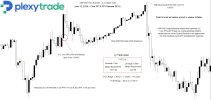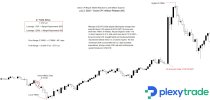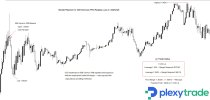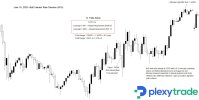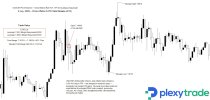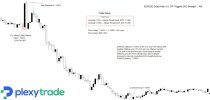️ High-Impact Economic Calendar – July 31, 2025
Timeline: GMT | Focused Currencies: CNY, AUD, JPY, CHF, EUR, USD, CAD, NZD
01:30 GMT
China – NBS Manufacturing PMI (July)
Forecast: 49.9 | Previous: 49.7
Currency: CNY
Market Insight:
As a leading indicator of economic health, this index captures the sentiment of China's state-dominated industrial sector. A print below 50 signals contraction. A positive surprise may offer a boost to risk sentiment and the yuan.
01:30 GMT
Australia – Retail Sales MoM (June)
Forecast: 0.3% | Previous: 0.2%
Currency: AUD
Key Indicator:
Retail spending reflects consumer confidence and economic resilience. A higher print may support the Aussie dollar, particularly if it outpaces inflation.
01:30 GMT
Australia – Building Permits MoM Prel (June)
Forecast: 1.2% | Previous: 3.2%
Currency: AUD
️
Why It Matters:
Permits are a forward-looking indicator of construction activity. A slowdown from the previous month could signal caution in housing markets or regulatory shifts.
03:00 GMT
Japan – BoJ Interest Rate Decision
Forecast: 0.5% | Previous: 0.5%
Currency: JPY
Market Focus:
The BoJ’s stance on rate policy remains critical as Japan navigates yield control and inflation pressures. Any deviation from expectations could trigger significant yen volatility.
05:00 GMT
Japan – Consumer Confidence (July)
Forecast: 35 | Previous: 34.5
Currency: JPY
Insight:
Sentiment readings hint at future household spending. A bounce may ease concerns of domestic stagnation.
06:30 GMT
Switzerland – Retail Sales MoM (June)
Forecast: 0.4% | Previous: -0.6%
Currency: CHF
Takeaway:
A rebound in monthly sales may support the franc, but seasonality and volatility should be considered in market response.
06:30 GMT
Switzerland – Retail Sales YoY (June)
Forecast: 0.5% | Previous: 0.0%
Currency: CHF
Why It Matters:
Annual growth in inflation-adjusted retail sales provides a clearer trend. An upside beat could reinforce economic recovery narratives.
06:45 GMT
France – Inflation Rate MoM Prel (July)
Forecast: 0.3% | Previous: 0.4%
Currency: EUR
Market Insight:
Slightly softer price growth could reduce pressure on the ECB. However, services inflation remains sticky.
06:45 GMT
France – PPI YoY (June)
Forecast: 0.2% | Previous: 0.2%
Currency: EUR
Producer Trends:
Flat growth in producer prices signals subdued upstream pressure, which may keep core inflation contained.
06:45 GMT
France – PPI MoM (June)
Forecast: -0.3% | Previous: -0.8%
Currency: EUR
Industry Pulse:
Deflationary pressure at the producer level could flow into consumer prices. A deeper contraction might influence ECB tone.
06:45 GMT
France – Inflation Rate YoY Prel (July)
Forecast: 1.0% | Previous: 1.0%
Currency: EUR
Market Movers:
Stable headline inflation may be welcomed by the ECB, but surprises to the upside could stir hawkish speculation.
07:55 GMT
Germany – Unemployment Rate (July)
Forecast: 6.4% | Previous: 6.3%
Currency: EUR
Behind the Numbers:
A slight rise in joblessness could add pressure to the German labor market outlook and weigh on euro sentiment.
09:00 GMT
Euro Area – Unemployment Rate (June)
Forecast: 6.3% | Previous: 6.3%
Currency: EUR
Eurozone Pulse:
Steady labor data offers no new cues, but any deviation could affect broader euro area risk pricing.
12:00 GMT
Germany – Inflation Rate YoY Prel (July)
Forecast: 1.9% | Previous: 2.0%
Currency: EUR
Key Reading:
A dip in annual inflation may reinforce dovish ECB expectations, though core dynamics still matter.
12:00 GMT
Germany – Inflation Rate MoM Prel (July)
Forecast: 0.2% | Previous: 0.0%
Currency: EUR
Trading Takeaway:
Month-over-month changes are crucial to detect new price trends. Even a mild increase could rattle bond markets.
12:30 GMT
U.S. – Personal Spending MoM (June)
Forecast: 0.4% | Previous: -0.1%
Currency: USD
️
Key Signal:
Spending rebounds signal consumer strength — a critical input for U.S. GDP trajectory and Fed timing.
12:30 GMT
U.S. – Core PCE Price Index MoM (June)
Forecast: 0.3% | Previous: 0.2%
Currency: USD
Why It Matters:
The Fed’s top inflation gauge. A stronger reading could raise odds of rate hikes or delay cuts.
12:30 GMT
U.S. – Personal Income MoM (June)
Forecast: 0.3% | Previous: -0.4%
Currency: USD
Income & Demand:
Stronger income growth may support spending — a positive feedback loop for inflation and rate expectations.
12:30 GMT
U.S. – Core PCE Price Index YoY (June)
Forecast: 2.8% | Previous: 2.7%
Currency: USD
Long-Term View:
This annual inflation print anchors Fed strategy. A sustained rise above 2.5% keeps rate cuts off the table.
12:30 GMT
U.S. – Initial Jobless Claims (Week Ending July 26)
Forecast: 220K | Previous: 217K
Currency: USD
What to Watch:
Small shifts in claims matter more during tight labor cycles. A surprise rise could revive recession chatter.
12:30 GMT
Canada – GDP MoM (May)
Forecast: -0.1% | Previous: -0.1%
Currency: CAD
Market Insight:
Flat growth suggests stagnation risks. A deeper contraction may pull forward BoC easing expectations.
13:45 GMT
U.S. – Chicago PMI (July)
Forecast: 43 | Previous: 40.4
Currency: USD
What’s at Stake:
An improving PMI could signal an industrial rebound. Still under 50, but trajectory matters for Fed watchers.
22:45 GMT
New Zealand – Building Permits MoM (June)
Forecast: 2.3% | Previous: 10.4%
Currency: NZD
️
Construction Outlook:
Permits are a key forward indicator. A steep drop may suggest softening demand or policy constraints.
23:30 GMT
Japan – Unemployment Rate (June)
Forecast: 2.5% | Previous: 2.5%
Currency: JPY
Final Word:
No change expected, but Japan’s tight labor market remains under scrutiny as policymakers assess wage dynamics.
Market Behavior Around High-Impact Data Releases
U.S. Core PCE (MoM & YoY), Personal Spending & Income – June 27, 2025
In May 2025, core inflation in the U.S. rose more than expected, with the core personal consumption expenditures (PCE) index— the Federal Reserve’s preferred inflation gauge—climbing 0.2% for the month and 2.7% year-over-year, surpassing forecasts of 0.1% and 2.6%. Overall PCE inflation increased 0.1% monthly and 2.3% annually, in line with expectations. Despite the inflation uptick, consumer spending fell 0.1% and personal income declined 0.4%, signaling economic softening. Analysts viewed the report as consistent with a gradually slowing economy ahead of anticipated tariff impacts. While markets remained largely stable, the data kept speculation alive about a potential July Fed rate cut, though officials remained cautious amid political pressure from President Trump.
EUR/USD initially spiked higher following the U.S. data release, driven by weaker-than-expected income and spending figures that fueled speculation of a Fed rate cut and weakened the dollar. However, the surprise uptick in core PCE inflation to 2.7% YoY acted as a hawkish signal, prompting a reversal as traders reassessed the Fed’s stance. The market's whipsaw reaction reflected the tension between dovish hopes and hawkish inflation data, illustrating how mixed signals can create volatile, layered responses in currency markets.
 Market Note: Geopolitical Risk & Earnings Season Volatility
Market Note: Geopolitical Risk & Earnings Season Volatility
Keep a close eye on geopolitical tensions — they can significantly impact market volatility, shift risk sentiment, and weigh on global equity performance.
Earnings season is a major catalyst for price action across global indices. While headline names like the US30, S&P 500, NASDAQ 100, FTSE 100, and DAX40 often take the spotlight, broader equity benchmarks worldwide can also react sharply. Market sentiment is shaped not only by results, but also by forward guidance and executive commentary — making this a key period for both opportunity and risk.
Disclaimer: The content provided is for educational and informational purposes only and is not intended as trading or financial advice. This analysis seeks to enhance your understanding of market behavior and highlight potential opportunities that may have existed, offering insights into how the market operates and the possibilities it may present.







